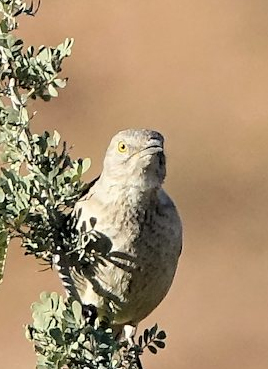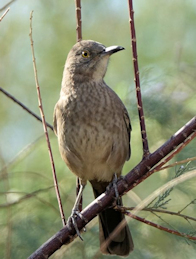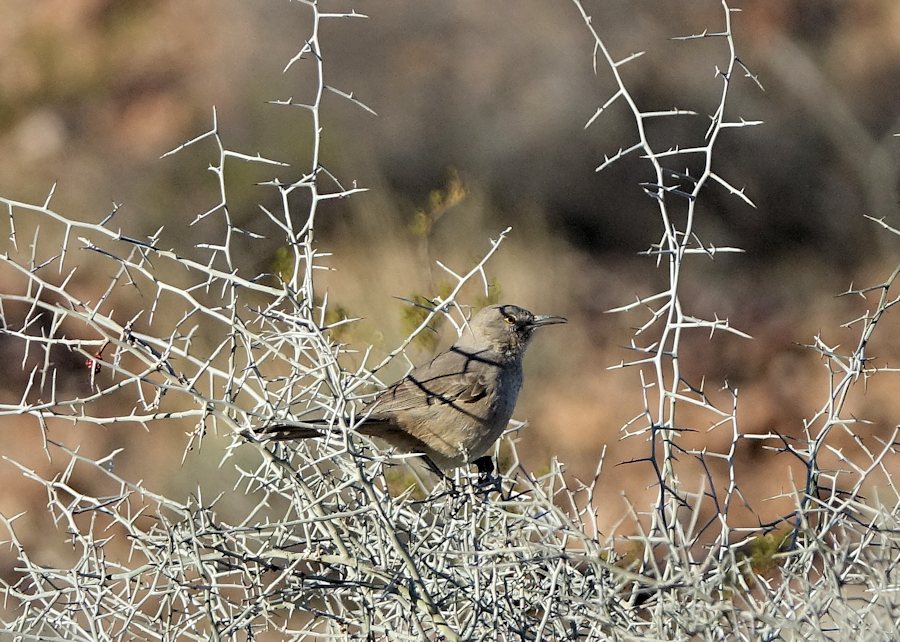|
Family: Mimids (Mimidae)
Genus & Species: Toxostoma bendirei
Identification:
- Size: 9.5" length, 13" wingspan, 2.2oz weight
- Male color and appearance: Tan brown overall, fading to a lighter shade on the undersides. The breast is mottled with arrow-shaped breast spots;
these show well during the spring breeding season, but become worn into the summer. The tail has white tips. The bill is shorter and straighter than all but the Sage Thrasher.
The lower mandible is very straight and there is usually a pale area visible at the base of the mandible. Iris usually a pale yellow, less orange than in Curve-billed Thrasher.
- Female ID: Appearance like male.
- Juvenile ID: No white tips to tail and a bit richer brown. Cinnamon edges to greater coverts and tertials.
- Flight: Direct quick flights. Note fairly long tail with white outer tail feather tips. Runs much more than it flies.
Feeding Behavior: Generally feeds on the ground, searching out bugs and small invertebrates.
Similar Species: Most similar to Curve-billed Thrasher, but with straighter, shorter bill, pale base to bill, arrow-shaped spots (in spring), and lighter eye.
Bendire's tends towards brown, while Curve-billed tends towards grey. In flight, note the white tail tips. White tail-tips shared with the New Mexico/Texas race of Curve-billed Thrasher,
but this race of the Curve-billed Thrasher has larger, distinct spots extending down to belly, unlike the Bendire's Thrasher.
Songs and Calls: Song is a long melodic warbling, with phrases often repeated several times. Not as scratchy as other thrashers. Call is a rather raspy two-part "tchee-uk." See recording below.
Status: Not a common bird. Usually shy and retiring.
Habitat: Found in brushy desert washes, open farmlands with hedgerows, and brushy grasslands. Farther east in yucca rangeland.
Breeding Range:
- CA: Mohave Desert
- AZ: southeast, northeast, and northwest
- NM: western portions of the state
- NV: extreme southern portion of the state
- CO: extreme south-central portion of the state
Wintering Range:
- AZ: south-central and sometimes southwest
Best Chances: As with most retiring thrashers, they are best looked for in late winter or early spring when they sing from perches on brush, cacti, yuccas, or trees.
In Arizona, they can be common in Prospector Park in Apache Junction (east of Phoenix). Look to the south of Arizona City and west of
Picacho Peak State Park, where a large swath of land that has proven to be excellent for finding both Bendire's and Sage Thrashers.
Stateline Road in New Mexico is excellent, it is east of the Chiricahua Mts. (AZ) and west of Rodeo, NM.
In California, you should be able to find these birds in the Mojave National Preserve.
|






